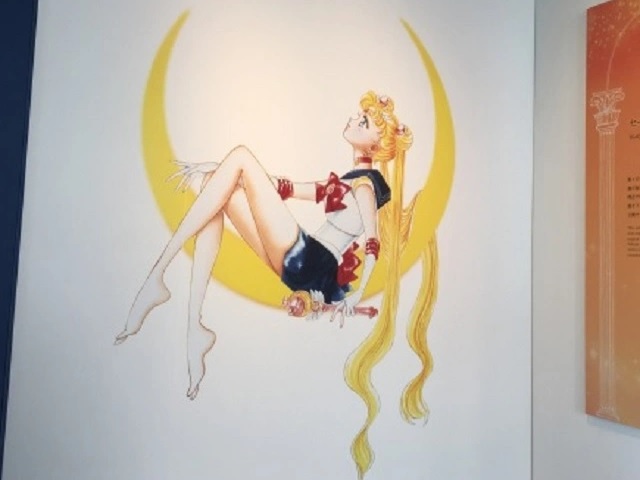The Sailor Moon theme song is based on another song about drinking a lot of tequila【Video】

Forget fighting evil, the original is about drinking and dancing by moonlight instead.
There aren’t many anime theme songs more instantly recognizable than Sailor Moon’s. Those first 10 notes are enough to get any fan singing along, whether its to the original Japanese opener “Moonlight Densetsu” or its adapted-to-English version from when the series was airing on TV in North America.
But it turns out there’s yet another set of lyrics you could be singing, since the melody for “Moonlight Densetsu” comes from a different song entirely.
That right there is “Yume wa Majolica Senorita,” and while the opening starts off a little different, by the 11-second mark it’s unmistakably the Sailor Moon opening theme, just with different lyrics. Performed by two-idol unit Key West Club, the lyrics for “Yume wa Majolica Senorita” actually say “yume no majolica senorita,” which translates to “majolica senorita of dreams,” with majolica referring to a type of Spanish pottery. The song opens with…
“Let’s dance all night, Luna! Our 12th round of tequilla
We’ve both got no one else to be with tonight, so it’s all right to cry”
…inform us that…
“Men are all, all the ultimate spirytus”
…and also contain…
“Majorica senoirita of dreams! You are the matador
But I realized that that man was a bull
A love that chases me down makes me want to turn my back”
“Yume wa Majolica Senorita” was released as a single CD on August 21, 1992, which might have some Sailor Moon fans saying “Ah ha! Then ‘Yume wa Majolica Senorita’ is the one using the melody from ‘Moonlight Densetsu,’ not the other way around!” After all, the Sailor Moon anime started airing on Japanese TV in the spring of that year, and “Moonlight Densetsu” was released as a single on March 21, 1992, exactly five months before “Yume wa Majolica Senorita.”
Here’s the thing, though. Key West Club formed in 1991 and was already performing “Yume wa Majolica Senorita” at concerts while the Sailor Moon was still in pre-premier production. The anime’s producers thought the tune was catchy, and a deal was worked out to allow for its melody to be used as the framework for “Moonlight Densetsu.”
“Moonlight Densetsu,” of course, quickly went on to become one of the most famous songs of all time in Japan, so even if “Yume wa Majolica Senorita” was five months late in hitting store shelves, why is it almost entirely forgotten? There are likely a handful of factors. First, when “Yume wa Majolica Senorita’s” single CD finally did go on sale, it was with a new arrangement where the Sailor Moon connection isn’t nearly as clear. If you’d just spent the past few months with the “Moonlight Densetsu” disc in your Walkman and the repeat function turned on, it you might even have thought “Yume wa Majolica Senorita” was a watered-down attempt to copy the Sailor Moon theme’s style and ride its coattails, particularly in the pre-Internet era where supposition was often all many had to go on for satisfying their pop culture curiosity, making for a less enjoyable listening experience.
▼ The second arrangement for “Yume wa Majolica Senorita”
Another contributing factor is that Key West Club didn’t last much longer after “Yume wa Majolica Senorita” went on sale. The single was actually the last CD the duo ever released, meaning it was never put on one of Key West Club’s albums, and by the end of 1992 the group had broken up. Following the split, Miki Nakatani, one half of the unit, went on to a successful career as a solo recording artist and actress, while Keiko Azuma, Key West Club’s other vocalist, faded away from the show business scene. That meant no reunion-concert or revival-tour performances of the song. Until 2012, when “Yume wa Majolica Senorita” showed up on a compilation CD of idol songs by various artists from the 1980s and ‘90s, it had been out of print for close to 20 years, and that compilation itself didn’t sell in large enough numbers to catch a lot of people’s notice.
While some fans with long memories and/or an encyclopedic knowledge of Sailor Moon and ‘90s idol music were already aware of the connection, it’s been getting renewed online interest recently in Japan, serving as an example of just how razor-thin the margin is between becoming a legend and a footnote in music history.
Source: Hachima Kiko, Wikipedia
Top image ©SoraNews24
● Want to hear about SoraNews24’s latest articles as soon as they’re published? Follow us on Facebook and Twitter!
Credit:

0 comments:
Post a Comment